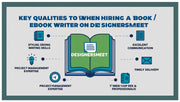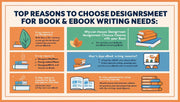Despite the rise of digital media, print design remains a vital aspect of branding and marketing. Effective print materials can enhance brand visibility and convey important messages in a tangible format. Whether it’s brochures, business cards, or flyers, the design choices you make can significantly impact how your audience perceives your brand.
Key components of effective print design include typography, imagery, and color theory. Typography is not just about choosing fonts; it’s about creating a visual hierarchy that guides the reader’s eye. Selecting the right typefaces can evoke emotions and enhance readability. Imagery, whether photographs or illustrations, should complement your message and align with your brand identity. Additionally, color theory plays a crucial role in influencing perception and emotions; understanding how colors work together can enhance the overall impact of your design.
When creating print materials, consistency is paramount. Your print designs should align with your overall brand identity, including your logo and color scheme. Consistent branding helps reinforce your message and builds trust with your audience. Moreover, it creates a cohesive experience, whether customers interact with your brand online or offline.
Best practices in print design also involve considering the medium and audience. Different print materials serve various purposes; understanding the context in which your design will be used can guide your choices. For instance, a business card should be succinct and memorable, while a brochure might allow for more detailed information.
In conclusion, effective print design remains an essential element of a successful marketing strategy. By focusing on typography, imagery, and consistency, businesses can create impactful print materials that enhance brand recognition and communicate their message clearly. As you navigate the digital age, don’t overlook the power of print to engage your audience in meaningful ways.




